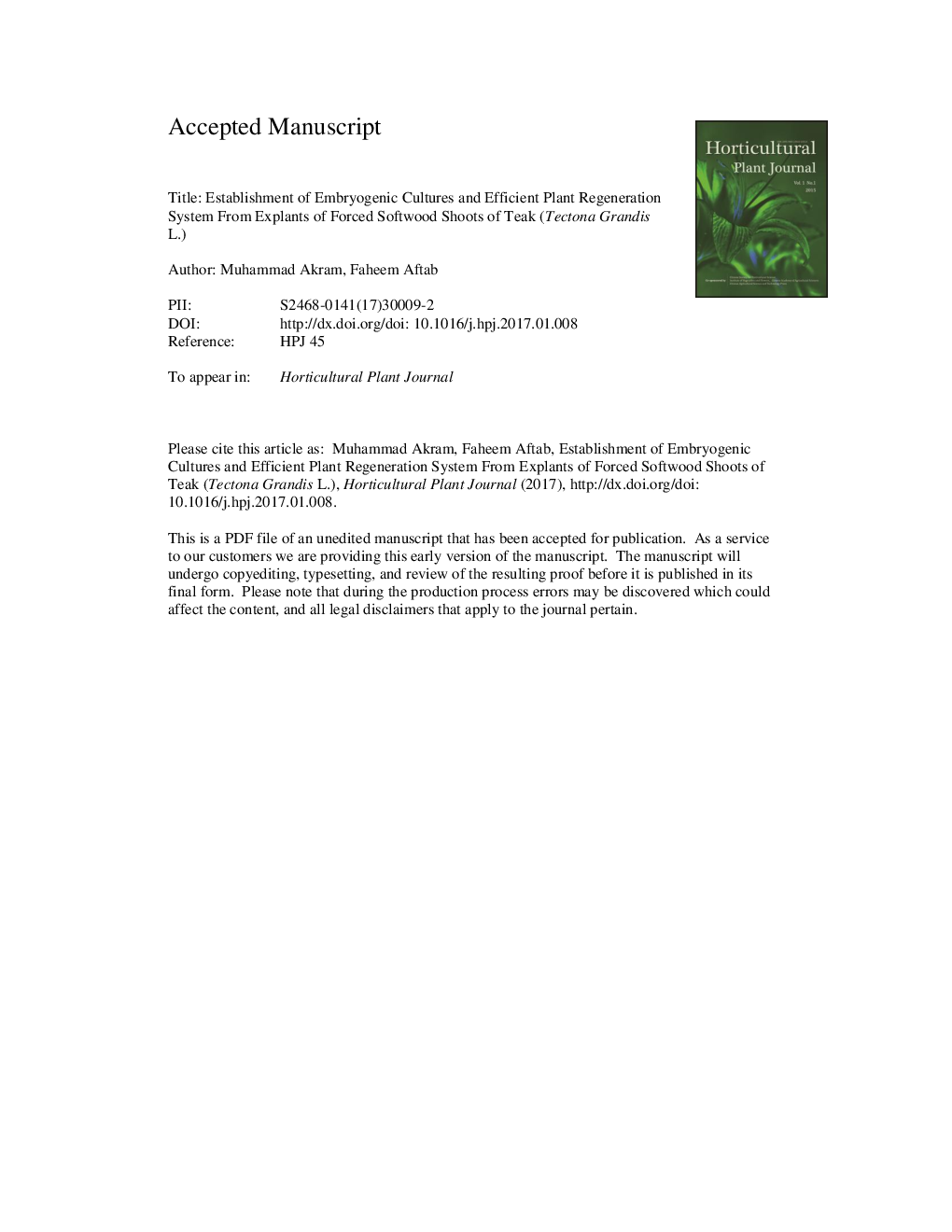| Article ID | Journal | Published Year | Pages | File Type |
|---|---|---|---|---|
| 8892258 | Horticultural Plant Journal | 2016 | 14 Pages |
Abstract
The present study highlights an efficient plant regeneration system in teak (Tectona grandis L.) using forced softwood shoots as an initial plant material. Forced softwood shoots of teak were cut to prepare shoot tip, nodal and internodal explants and cultured on Murashige and Skoog (MS) mediumâ+âNAA (1, 3, 6, 10, and 15 µmolââ
âLâ1) or TDZ (0.001, 0.01, 0.1, 1, 4, 8, 10, 12 µmolââ
âLâ1) for callus induction. Such calluses were further grown on the same levels of TDZ or 0.4, 1, 4, 8, 10 µmolââ
âLâ1 BAâ+â1 µmolââ
âLâ1 IBA or GA3. Callus induction was the highest with 4.55âcm3 callus volume and 5.75âg dry weight at 0.1 µmolââ
âLâ1 TDZ from shoot tips after 35 days. Embryogenic calluses were then shifted to 6, 8 or 12 µmolââ
âLâ1 TDZâ+â2 µmolââ
âLâ1 BA or IBA along with 5âmmolââ
âLâ1 ascorbic acid (AA) for shoot regeneration from embryogenic cultures. The highest embryogenesis (100%) with 36.4 globular and 5.5 heart-shaped embryo-like structures was obtained at 8 µmolââ
âLâ1 TDZâ+â2 µmolââ
âLâ1 BA after 63 days. Such cultures when further maintained on the same medium up to 150 days resulted in 100% shoot regeneration with 16.4 mean shoots. Shoots were elongated up to 50âmm on agar mediumâ+â8 µmolââ
âLâ1 BAâ+â1 µmolââ
âLâ1 GA3. An efficient rooting response (70%) was achieved having 4.50 mean number and 49.10âmm root length at 8 µmolââ
âLâ1 IBAâ+â8 µmolââ
âLâ1 NAAâ+â0.1% activated charcoal after 36 days. Rooted shoots were acclimatized in glasshouse, achieving 56.6% plantlet survival.
Related Topics
Life Sciences
Agricultural and Biological Sciences
Forestry
Authors
Muhammad Akram, Faheem Aftab,
